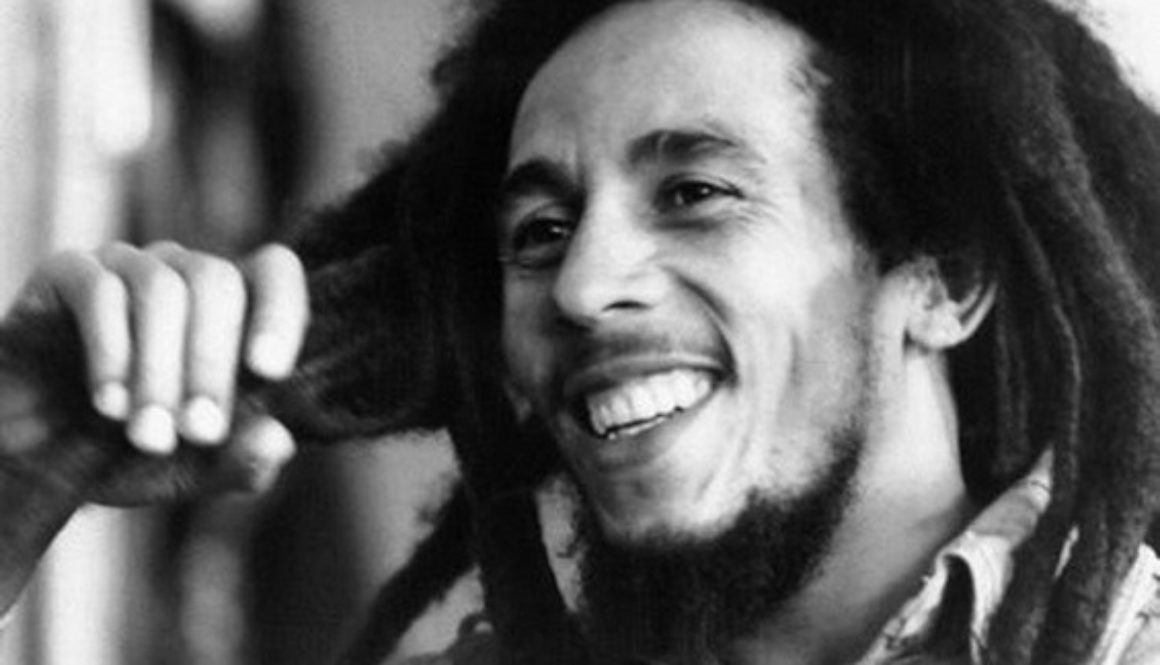Bob Marley – Music Biography

If you’ve ever been inside a college dorm you’ve probably seen his face on the wall. And if you’ve ever vacationed somewhere with lots of sun and sand you’ve probably heard his music pouring out of radios, boom boxes, and iPods as well as from the speakers of bars and restaurants. And that’s not counting the many bands and musicians, from professionals who fill stadiums to cover bands at your local pubs to the amateurs at open mics, all honoring the spirit and music of a man long gone.
In the near thirty years since his death, Bob Marley’s popularity hasn’t waned. His greatest hits album, Legend, has sold over twenty million copies, making him reggae music’s most recognizable and possibly best-loved ambassador. His music combines deceptively simple chord and melody structure with an intricately layered rhythm and adds a social message that reveals much more than the day-to-day struggles of poverty that inspired it.
Bob Markey was born on February 6, 1945 in a rural Jamaican village. The son of a middle-aged white man and a teenage black woman, Marley endured racism and prejudice as a child. Although absent most of the time, Marley’s father provided financial support for his family until his sudden death when Marley was only ten. The family was forced to move to a slum area of Kingston, Jamaica known as Trenchtown. This is where young Marley’s musical life first intersected with fellow reggae musicians Bunny Wailer and Peter Tosh. Marley’s earliest recorded songs were a pair of singles recorded in 1962 that attracted little attention until they appeared on a box set released after his death.
Teaming up with Bunny Wailer and Peter Tosh and calling themselves the Wailers, the group was joined by producer Lee “Scratch” Perry for a short-lived but successful musical relationship. Their first major label album, Catch a Fire (1973), boasted the song “Stir It Up.” The following year they released Burnin’ with the classic songs “Get Up, Stand Up” and “I Shot the Sheriff.” The latter song launched Marley to worldwide fame after Eric Clapton scored a hit with it in 1974. Around the same time the three core members of the Wailers broke up, with Marley going his own way. He continued to record under the name “Bob Marley and The Wailers” and it wasn’t long before he produced an international hit of his own with “No Woman No Cry” in 1975.
In 1976 Marley moved to England to record two of his most successful albums: Exodus and Kaya. These albums may have been recorded at the same time but they present very different material. The songs on Exodus reveal a more urgent political message while Kaya features more laid back music exploring the universal topics of love and spirituality. Notable songs from these albums are “Exodus”, “Jamming”, “Waiting in Vain”, “Is This Love” and “Satisfy My Soul”.
Marley’s next pair of albums dealt further with politics (Survival, 1979) and religion (Uprising, 1980). Uprising closes with the ballad “Redemption Song,” celebrated by solo guitar players everywhere. Marley’s final album of new material, Confrontation, was released in 1983, two years after he died from cancer.
Bob Marley was only thirty-six at the time of his death in 1981. He was given a state funeral in Jamaica and buried near his birthplace. In 1999 Time magazine chose Exodus as the greatest album of the 20th century, saying:
Every song is a classic, from the messages of love to the anthems of revolution. But more than that, the album is a political and cultural nexus, drawing inspiration from the Third World and then giving voice to it the world over
The same could be said of Bob Marley’s whole body of music. It’s hard to imagine another musician that has crossed as many cultural boundaries and united so many people under the banner of music.
